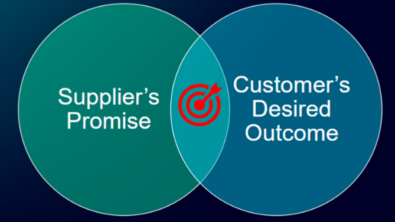How low-code enables servitization in manufacturing

Over the past few years, there has been a significant shift in the manufacturing industry toward servitization. This involves transitioning from a traditional product-focused business model to a service-oriented one, which has become increasingly popular among companies looking to meet changing customer needs while staying ahead of the competition.
Many manufacturers are now realizing that offering services in addition to their products can enhance customer relationships and drive revenue growth. In fact, according to IDC researchers, digital products, services and experiences are expected to account for 40% of the total revenue generated by G2000 organizations by 2026.
In this blog, you will learn the benefits and challenges of servitization for manufacturers, how low-code facilitates the transition towards this approach, and finally, how CLEVR, a leading low-code company, can provide successful servitization strategies in field service management for manufacturers.
What is servitization in manufacturing?
Servitization refers to manufacturers’ transition from only producing and selling products to offering services and solutions that add value to their customers. This business approach allows manufacturers to provide complete installation, maintenance, repair, training, and consulting services to create long-lasting customer relationships. By adopting this business model, manufacturers can generate more revenue streams and increase profitability over time.
Benefits of servitization
Servitization provides a way for manufacturers to differentiate themselves from competitors and offer more value to their customers. Manufacturers can build closer ties with their customers by providing ongoing support and services, translating into long-term relationships. Services often have higher profit margins than products, which can help to boost overall profitability for manufacturing companies.
This approach has numerous benefits for manufacturers:
- Differentiation: Servitization provides a way for manufacturers to differentiate themselves from competitors by offering ongoing support and services to customers. This can help to build stronger relationships with customers and increase loyalty.
- Improved profitability: Services often have higher profit margins than products, which can help to boost overall profitability for manufacturers. By offering services alongside their products, manufacturers can increase revenue and profitability.
- Innovation: The shift towards servitization can encourage innovation as manufacturers look for new ways to add value for their customers. This can lead to the development of new products and services and new business models and processes.
- Long-term relationships: Manufacturers can build long-term relationships with their clients by offering ongoing support and services.
The benefits of servitization are clear, but it has its challenges. As manufacturers shift toward this business strategy, they may encounter several obstacles.
Challenges of servitization
While servitization offers many benefits for manufacturers, it also presents several challenges that must be addressed for successful implementation. Some of these challenges are:
- Resistance to change: Many companies may resist shifting from a traditional product-based business model to a service-based one, particularly if they have a successful product line.
- Investment costs: Implementing a servitization strategy often requires significant investment in technology, software, and infrastructure.
- Skills and talents: Servitization requires new skills and talent, particularly in data analytics, software development, and customer service.
Servitization in field service management (FSM)

Manufacturers transitioning to servitization face significant changes in their field service processes. Some online service providers have set new standards for customer experience while customers expect high response times. To meet these expectations, manufacturers need integrated workflows to act quickly and optimize first-time-right execution. Moreover, they need to shift from reactive to preventive maintenance, which is now made possible by new technologies like AI and IoT.
One way to manage the changes in the field service process during servitization is through a low-code field service management solution. This technology provides support throughout the journey, allowing manufacturers to start with their current process without significant changes. Low-code technology also enables fast and easy adaptation to future changes, helping manufacturers to stay agile and flexible.
How can low code facilitate servitization in manufacturing?
Manufacturers looking to implement a successful servitization strategy must invest in flexible technologies and software solutions. Low code is one of the solutions that offers speed, ease of use, and the ability to integrate with existing systems. This enables manufacturing companies to deliver new applications quickly and stay agile to future adjustments, ensuring they remain competitive and able to respond to changing customer needs.
It is necessary to mention that low-code technology doesn’t have to replace existing systems. Instead, it can be used on top of core systems as an additional layer, allowing manufacturers to build and support custom processes. This approach can help manufacturers achieve the benefits of servitization without replacing their entire technology infrastructure.
Moreover, low-code technology can also enhance field service management, enabling manufacturers to manage their operations more efficiently. Manufacturers can easily build and deploy custom field service applications using low-code. This can lead to faster response times, improved customer satisfaction and reduced operational costs.
CLEVR: The smart choice for manufacturers
CLEVR has developed a highly capable field service management tool to help manufacturers take the first steps towards servitization. This tool provides end-to-end visibility and control over all the critical areas of your field service operations, including dispatching, scheduling, field engineer support, and performance tracking. With CLEVR’s main capabilities, such as work order operations, engineers’ work planning, workforce management, intelligent dashboarding and more, the tool is designed to fit your business processes perfectly.
To smoothly transition to servitization, it is advised for companies to define which elements of the strategy will be most advantageous for their business. Fortunately, with CLEVR’s flexible solutions, manufacturers can selectively incorporate the aspects of servitization that suit their specific needs. Our tools are designed to support all approaches and phases of servitization, providing a customized solution that aligns with each company’s objectives and requirements.
CLEVR can assist customers looking to leverage this powerful technology and transform their businesses. The company has a proven track record of success, especially using Mendix as an underlying platform.
Looking to transform your manufacturing business with servitization and low-code technology? Contact CLEVR today to learn how you can successfully transition and stay ahead of the competition.
About the author
Ech-chaimae Touarha is the Content Marketing Manager at CLEVR, contributing to its mission of “Building Tomorrow Together.” With over 20 years of domain expertise, CLEVR provides innovative and sustainable PLM and low-code solutions that enable businesses to streamline their processes and embrace digital transformation.


